Anyway, the best safety wire to use is .025" steel wire. you can use .032" and it's sturdier but harder to use and whatever you safety with .025 will work just fine unless you're working on propeller aircraft or Rotorheads of helicopters.
Anyway, the tools I use are a pair of Snap-on dikes and Snap-on reversable safety wire pliers. For years I used regular safety wire pliers but they only come in right hand twist, you don't always use R/H twist so it's only 1/2 of what you need. When I got out of the Army and had to buy my own tools I think the Snap-on's are the cat's meow.

OK, here you cut a piece of wire and thread it thru the eye of the bolt head and go around as such. Usually I put 1 R/H twist in it by hand to get it ready for twisting with the pliers.
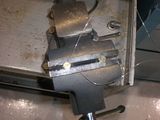
Now you take your pliers and clamp on to the wire at a little beyond the hole your twisting to. The wire will shrink as you twist but only just a red headed cunt hair. Once you are used to doing it, it becomes second nature and you instinctively know where to grab. The wire pliers have a lock on them that you use to keep hold of the wires without squeezing. I can't recall how many times I've been to traders village flea market at the tool guys shop and dudes will say, "Hey, that would be a good set of wire pliers without this wierd thing on it." Well, that's the lock dumbass. So, you clap and squeeze the wires in the jaws and set the lock. Now twist.
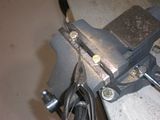
the standard for wire is 6 to 12 turns per inch but I like anywhere from 8 to 10. That's another instinctive thing learned over time and experience.
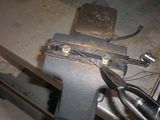
Then you take whichever wire you decide makes the best "taught" fit and thread it thru the hole of the other bolt. Always remember to saefty where if one bolt loosens the other will tighten.

Bring the other wire around and give it a Left Hand twist or two by hand and get the pliers back on the wire. Remember, if you have a reversable set to go into Left mode.
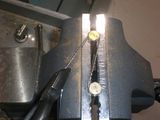
Once you have your twist set up cut the wire with your dikes or with your safety wire pliers about anywhere from 1/2 inch to an inch. It's all a matter of taste and you can usually tell who safeties by where and how they form their pigtail.
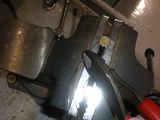
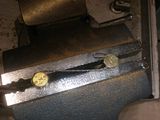
The pigtail is just bent over wire to keep itself from unravelling. Another safety feature of safetys.
Here is my ruler to give you an idea of pitch of twist on a three bolt safety, just at 8 turns per inch. Anytime you're safeting more than two bolts the rule still applys, to safety if one bolt wants to loosen the others will tighten.
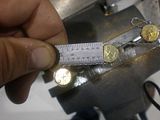
2 comments:
You need to come over and show me that tricky biz!We'll feed you in trade
Anytime Mike.
Post a Comment